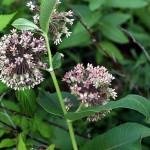By Catherine Haug, May 15, 2014
Are you wondering what a “micro-biome” is? Here’s an entertaining, animated video that explains what it is and why it is important for your health. Even your kids and grandkids would enjoy this – and learn something at the same time. It’s a short video, about 5.5 minutes, titled “Exploring The Invisible Universe That Lives On Us — And In Us”
In our 21st century American culture, we have become afraid of microbes, believing all of them to be deadly germs. But did you know that the bacteria inside our bodies outnumber our own cells by 10 to 1, and that we would live a miserable, short life without them?
This article includes discussions about gut health and antibiotics, and a link to view the video: npr.org: Exploring the invisible universe that lives on us and in us.
More videos on the topic:
- TEDx: The gut flora: You and your 100 trillion friends on YouTube (9 min)
- From Gut to Brain and Back Again on You Tube (4 min)
- How to heal leaky gut syndrome on You Tube (34 min)
See also my 2016 post: What is a microbiome and why it is important
Our microbiome
Put simply, the microbiome is the great variety of microbial fauna and flora that inhabit out bodies, within and without. Our gut probiotics are only a part of the microbiome – albeit a very important part. Our microbiome is our protective shield, inside and outside our bodies. It protects us from harmful bugs by training our immune system to function properly, and by producing effective and natural antibiotics, anti-virals and anti-fungals as needed to subdue invading threats to our health.
Scientists are only beginning to explore this vast topic, but we humans have known since the dawn of our creation how to keep our microbiome happy – eat the right foods, including fermented foods. Unfortunately, the advent of processed and junk foods – especially GMO foods – has done great damage to our microbiome, so that with each generation, it becomes more and more impaired..
More about your body’s microbes
The following is paraphrased from AARP, with a few notes of my own, in brackets [ ].
More than 100 trillion microbes, from over 500 different species, live in our gut – digestive system, from mouth to anus – and provide our first line of defense against disease. Changes in our gut bacteria may lead to constipation or diarrhea, or worse problems in the gut and throughout our bodies. We have a friendly relationship with out native microbes; in exchange for providing them ‘room and board,’ they return that favor in may ways, including:
- Producing enzymes we need to digest food [these enzymes may also perform cellular functions elsewhere in our bodies];
- Maintaining the right level of acidity in the gut [which impacts body pH elsewhere as well]. Each part of the gut requires a different pH for optimum performance in breaking down and foods and absorbing their nutrients.
- Turning food into nutrients we wouldn’t get otherwise. For example, vitamin K, important for blood clotting [and many other functions];
- Protecting the lining of our intestines so that harmful germs in our food cannot escape the gut and make us sick;
- Working with our immune system to control allergies and fight disease.
As unique as a fingerprint
Did you know that each person’s microbiome is as unique to that person as a fingerprint? [Your mix of microbes is a very delicate balance between probiotic (support life), putrefactive (decay life), and pathogenic (dangerous to life)]. Any shift in that balance will lead to health issues. For example:
- Digestive issues such as diarrhea, constipation, ulcers, and gut inflammation;
- Chronic inflammation, affecting organs beyond your digestive tract, such as blood vessels and kidneys;
- Cancers;
- Anxiety and depression.
A shift in your microbiome
When you are beset with disease, that could be a sign of a shift in your microbiome. Such a shift can be caused by many factors including, but not limited to:
- genetics;
- improper diet, such as fast foods, processed foods, GMO foods;
- shift in your body’s pH;
- bad environment;
- unusual weight gain or weight loss;
- improper- or over-use of antibiotics.
While restoring proper balance can be accomplished by transferring a healthy person’s intestinal microbes into a sick person’s system, there are other effective means as well. Making changes in your diet such as:
- eliminating fast foods and processed foods, and
- replacing them with fresh fruits and vegetables, raw dairy, meats and eggs from pasture-fed livestock, healthful fats [such as butter, lard, coconut oil, and olive oil] and fermented/cultured foods [such as sauerkraut, laacto-fermented pickles and chutneys, beet kvass, yogurt, kefir and so on].
will go a long way to restoring health and balance to your microbiome, and to your system as a whole.
About antibiotics
AARP advises:
Use antibiotics wisely. In some cases, your doctor may prescribe them for digestive conditions. Always take them as directed.
But taking antibiotics for other illnesses can accidentally kill good bacteria too, and their side effects include diarrhea and other stomach issues.
Don’t demand [or accept] antibiotics for viral infections such as colds and flu. And never take someone else’s prescription.
Why do antibiotics “accidentally” kill good bacteria too?
The following is by Cat:
Unlike the first penicillin, today’s antibiotics are synthetic, in whole or part, and cannot distinguish friend from foe.
- Some start as natural antibiotics from good bugs like penicillin molds, but are then chemically altered so they can be patented; this altering removes the ability of the antibiotic to distinguish friend from foe. They will kill any bug they encounter – good or bad.
- Others are synthetic from the beginning, although they may copy part of a natural antibiotic. They do not come with the ability to distinguish friend from foe, because science does not (yet) know how that functionality works in natural antibiotics.
I personally have had good luck treating serious bacterial infections (such as staph and strep) with antibacterial herbal tinctures (like goldenseal and barberry), steamed and dried mushrooms (like reishi), raw coconut oil, and acupuncture. None of these methods kill the good bugs. However, I advise seeking expert advice from a certified health care practitioner, if you choose to follow this route, as I do.
If you must take a prescription antibiotic, take probiotic supplements and consume fermented/cultured foods such as sauerkraut, beet kvass, yogurt, cottage cheese and kefir. However, take them at least 2 hours before/after taking the antibiotic to minimize the “accidental” killing of the good bugs in the probiotics and fermented foods.
In fact, it’s a good idea to eat a bit of fermented/cultured food every day, for optimum gut health. The microbes in these foods may not actually colonize in your gut, but they work to establish the appropriate pH and environment so that your own microbiome can thrive.
References




